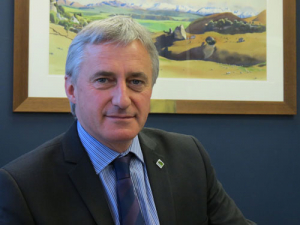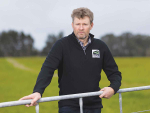New Zealand, as we all know, is blessed with abundant water and we have it to ourselves.
We have abundant water, but not always in the right place at the right time. For example, North Canterbury had been in drought for three years, affecting not only farmers who had to turn off their irrigators, but also rivers like Selwyn – the subject of intense media scrutiny over the early part of this year.
In the final Selwyn River hurrah, before the rains came and ruined all the fun, The Press, in Christchurch, ran a front page article on the Irwell River where fishing had been destroyed.
Buried deep in the article were two small observations: nearby Heart Creek had been destitute for some ten years before, but farmers had got together and rehabilitated it; and the complaining fisherman travelled to South Canterbury’s Opihi River to fish, yet no mention was made of its being supplemented by the Opuha Dam built by farmers.
This raises a question: how is the primary sector achieving on-the-ground behaviour change to meet the challenge to improve fresh water?
Farmers have seen the problem of over-allocation of water in the Selwyn River and are working hard to address this. They recognise the effect nutrients are having on Te Whaihora and are working to fix that too.
In my own patch of coastal South Canterbury, farmers reacted strongly and negatively to the potential imposition of rules restricting water use and allocating nutrients.
However once they had became engaged and understood the issues, they moved quickly from reaction to proaction.
They worked together to achieve the best solution which in my view needed to pass two critical tests: first, any regime would not affect the business value of the high emitters; second, any regime would not affect the land value of the low emitters.
We did pretty well in those regards, but only because the farmers worked from the catchment up to find solutions.
No one is saying farmers and farming have no effect on the environment.
What I am saying is that up and down the country farmers get it and are working hard to address the problem.
Dairy farmers have spent at least $1 billion fencing rivers, riparian planting and improving effluent management.
Their dryland cousins have contributed most to setting up QEII covenants protecting private land for conservation at a real and opportunity cost of $1.2b to $1.4b; our levy bodies spend millions of dollars on research, much of it now focused on water issues.
Catchment by catchment, farmers and other locals are working together to come up with solutions that are sensible, practical and affordable.
They are on a journey. Despite this effort there are still catchments which need work and we need to concentrate our efforts there.
But I contend that behaviour change is already under way: 80% of our catchments have water either improving or stable in quality.
Even Horizons was achieving water quality progress as they implemented their plan but at the point they were dragged off to court.
On-the-ground behaviour change happens when the players are engaged constructively, not forced to keep a narrow set of unworkable rules.
On-the-ground behaviour happens when the problem is viewed from the ground up (catchment by catchment) not from the top down. And on-the-ground behaviour change happens when it is led by good science, not activist rhetoric.
• This is an edited version of a speech given to Local Government NZ in June by former Federated Farmers national president William Rolleston.



















